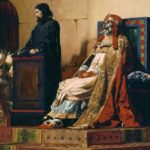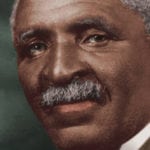 Technology
Technology  Technology
Technology  Humans
Humans 10 Everyday Human Behaviors That Are Actually Survival Instincts
 Animals
Animals 10 Animals That Humiliated and Harmed Historical Leaders
 History
History 10 Most Influential Protests in Modern History
 Creepy
Creepy 10 More Representations of Death from Myth, Legend, and Folktale
 Technology
Technology 10 Scientific Breakthroughs of 2025 That’ll Change Everything
 Our World
Our World 10 Ways Icelandic Culture Makes Other Countries Look Boring
 Misconceptions
Misconceptions 10 Common Misconceptions About the Victorian Era
 Mysteries
Mysteries 10 Strange Unexplained Mysteries of 2025
 Miscellaneous
Miscellaneous 10 of History’s Most Bell-Ringing Finishing Moves
 Technology
Technology Top 10 Everyday Tech Buzzwords That Hide a Darker Past
 Humans
Humans 10 Everyday Human Behaviors That Are Actually Survival Instincts
 Animals
Animals 10 Animals That Humiliated and Harmed Historical Leaders
Who's Behind Listverse?

Jamie Frater
Head Editor
Jamie founded Listverse due to an insatiable desire to share fascinating, obscure, and bizarre facts. He has been a guest speaker on numerous national radio and television stations and is a five time published author.
More About Us History
History 10 Most Influential Protests in Modern History
 Creepy
Creepy 10 More Representations of Death from Myth, Legend, and Folktale
 Technology
Technology 10 Scientific Breakthroughs of 2025 That’ll Change Everything
 Our World
Our World 10 Ways Icelandic Culture Makes Other Countries Look Boring
 Misconceptions
Misconceptions 10 Common Misconceptions About the Victorian Era
 Mysteries
Mysteries 10 Strange Unexplained Mysteries of 2025
 Miscellaneous
Miscellaneous 10 of History’s Most Bell-Ringing Finishing Moves
10 Fascinating Last Letters Of Prominent Historical Figures
Last letters can be intriguing, and those written by famous historical figures are perhaps more fascinating. They give us a rare insight into their minds during the last moments of their lives.
10 Harry Houdini
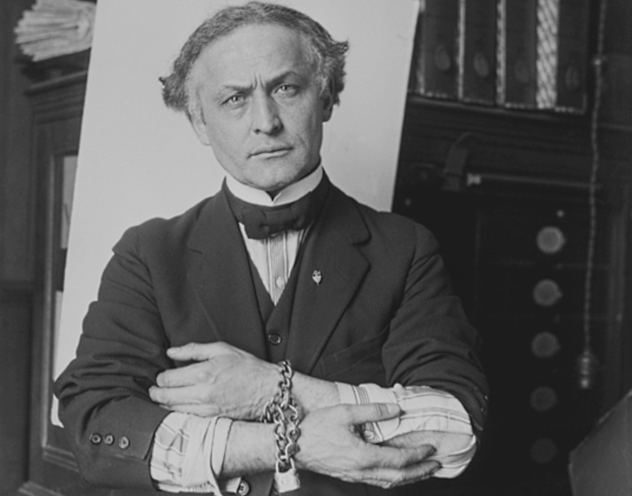
On August 6, 1926, Harry Houdini got into a metal box, had it dropped to the bottom of a pool, and emerged safe after staying in the water for 91 minutes. The trick was done to discredit Rahman Bey, an Egyptian who had performed and survived the same trick two months earlier but attributed his success to magic. After the performance, Houdini wrote a letter explaining how he did it to Dr. W.J. McConnell, a physiologist with the US Bureau of Mines, who was present at the event.
Harry began the typed letter by explaining the size of the casket used to perform the trick. He stated that he had previously done two trial tests for the trick, one of which did not involve submerging the casket. In each test, Houdini listed the problems he faced, the little mistakes he made, and the results he achieved. He concluded by writing on the day’s earlier performance, which he called the third test and bragged about how his long years as a veteran escapist helped him pull the trick off without a hitch. Houdini died less than three months later at the age of 52.
9 Benigno ‘Ninoy’ Aquino Jr.

On August 21, 1983, Benigno “Ninoy” Aquino Jr. was assassinated at the Manila International Airport upon his arrival from the United States. Being the most prominent of the critics of Ferdinand Marcos’s government, Benigno had feared that he would be imprisoned or killed the moment he stepped on his country’s soil. He decided to write a letter to Corazon “Cory” Aquino, his wife and future Philippines president, a few hours before his plane landed.
In the letter, Ninoy stated his uncertainty about the result of the journey. He expressed his love for Cory and cherished her support for him during his struggles. He asked for her forgiveness for not appreciating her often but claimed that his love for Cory superseded hers for him. He declared his service to the public as the legacy that he bequeathed upon his children and expressed his belief that it was much more than material wealth. He advised her to take a trip with the kids to Europe in case he was detained when his plane landed and ended the letter with a promise to call that night if he was permitted.
8 Princess Diana

The last official letter penned by Princess Diana was written two weeks before her death. The letter, dated August 11, 1997, was addressed to Dilys Cheetham, a campaigner against the use of land mines. Diana, who had just returned from a three-day trip to Bosnia to meet with survivors of land mine blasts, penned the letter as a reply to an earlier letter sent by Cheetham to inform the princess about her charity work in Mostar, Bosnia.
Diana began in her letter by thanking Cheetham for the charity works that she had done so far for the victims, especially children at refugee camps in Mostar. Diana hinted in her letter that although she could not visit Mostar to verify Cheetham’s claim, she was nonetheless pleased with her kind act. She continued by stating how touched she was after meeting with land mine victims and their families and promising to bring their plight to the world’s attention so they could be provided for.
Cheetham sold the letter to a photographer in 1999 during a charity auction organized in honor of land mine victims. The photographer, Jason Fraser, sold it to an unnamed buyer for £2,976 in 2007.
7 Ernest Hemingway
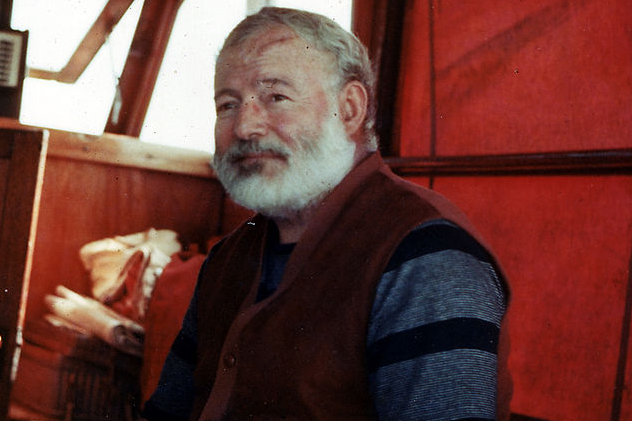
Ernest Hemingway was without a doubt the manliest writer of his generation. He was known to beat people up on behalf of his friend, James Joyce, and kill sharks with machine guns. His last known letter, however, stands in contrast with the hard-core image of him that we know.
The letter was dated June 15, 1961, and was sent while Hemingway was still a patient at the Mayo Clinic in Rochester, Minnesota. It was addressed to Fritz, the nine-year-old son of Hemingway’s friend, Dr. George B. Saviers. Hemingway showed his rarely seen sensitive side by attempting to cheer up the young boy. Fritz had been transferred a few days earlier from Idaho to a hospital in Denver, where he was being treated for a heart condition.
Hemingway expressed sympathy and told Fritz that he wrote the letter with the hope that it would make him feel better. He talked about the temperature and landscape of Minnesota and described the beautiful Mississippi countrysides that he’d seen. He expressed optimism that both of them would get out of their respective hospitals soon and closed by telling Fritz that he was feeling quite positive about life.
Sadly, Hemingway might have been lying about the positive feelings. He committed suicide 17 days later, after getting back to Idaho.
6 Albert Einstein
In April 1955, Albert Einstein sent a short reply to a fellow Nobel laureate Bertrand Russell, pledging his requested support to what would later be known as the “Russell-Einstein Manifesto.” It was a written agreement signed by eminent scientists to warn leaders of world nations about the dangers of wars and advise them to seek peace instead. The letter turned out to be the last that Einstein ever wrote before his demise a few days later.
However, Einstein penned a much more interesting letter in the twilight of his life, about a year before his death. He addressed it to Erik Gutkind after reading his book, Choose Life: The Biblical Call to Revolt. The book was recommended by Luitzen Egbertus Jan Brouwer, a mutual friend of theirs.
In the letter, which was highly critical of religion, belief in God, and the Jewish people, Einstein confessed to Gutkind that without Brouwer’s recommendation, he would never have read the book because it was written in an inaccessible language. He stated that he saw God as the “product of human weakness” and claimed that religion stemmed from childish superstition. Einstein also explained to Gutkind, a fellow Jew, that he personally thought that the Jewish people were not chosen by God, as they were neither different from nor more special than any other race of people. The letter, written in German, ended with the acknowledgement that although they were of different opinions on certain matters, they were alike in many ways.
5 Marie Antoinette
Although Marie Antoinette never said the “let them eat cake” quote, her enviable lifestyle, along with that of other aristocrats, was what provoked the French Revolution. A few hours before her head rolled from the guillotine, she wrote a letter addressed to her sister-in-law, Princess Elisabeth Philippine Marie Helene.
In the letter, the captured queen admitted that she saw her death as a way to rejoin her dead husband, Louis XVI. She maintained that like Louis, she was innocent of the crime of which she was accused. Marie was sad about leaving her children but expressed confidence in Elisabeth’s ability to take good care of them and stir them toward the right path. She strictly warned her children, especially her son, not to avenge her death and pleaded with Elisabeth to forgive his mistakes because he was still a child. The soulful letter continued with Marie Antoinette asking Elisabeth to extend her farewell to relatives and friends. She ended the letter by seeking forgiveness from God and anyone whom she’d offended. She also granted forgiveness to her enemies.
4 Sir Thomas More
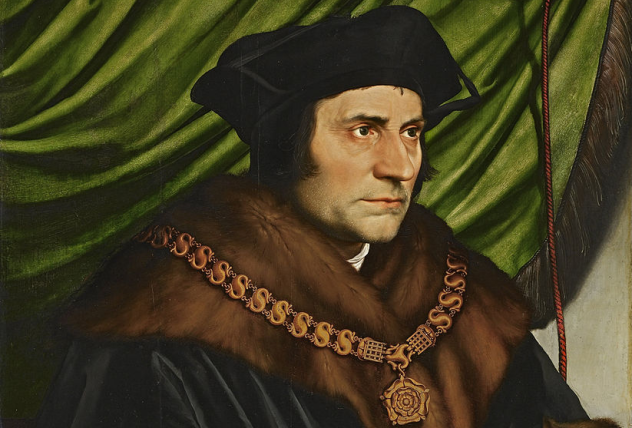
Sir Thomas More was the lord high chancellor of England during the 16th century. He was executed for treason on the orders of Henry VIII after he refused to accept the annulment of the king’s marriage to Catherine of Aragon. Also, Thomas did not acknowledge Henry’s marriage to Anne Boleyn and rejected him as the supreme head of the Church of England.
While he was waiting to be executed, Thomas penned a letter to his daughter, Margaret. The letter was written with a stick of charcoal on a cloth because Henry had all of his writing material confiscated. Thomas began the letter, dated July 5, 1535, by praying for blessings for Margaret, his other children, and family friends. He sent some gifts along with the letter and spoke, among other things, of how much he would miss his close friends. He sent a handkerchief to Cecily, his last daughter, and an algorism stone (a device used for calculations) to a relative. He requested that his son and heir, John More, not disobey his will concerning Daunce, his sister. Finally, Thomas expressed hope for seeing his family and friends in Heaven.
3 Anne Boleyn
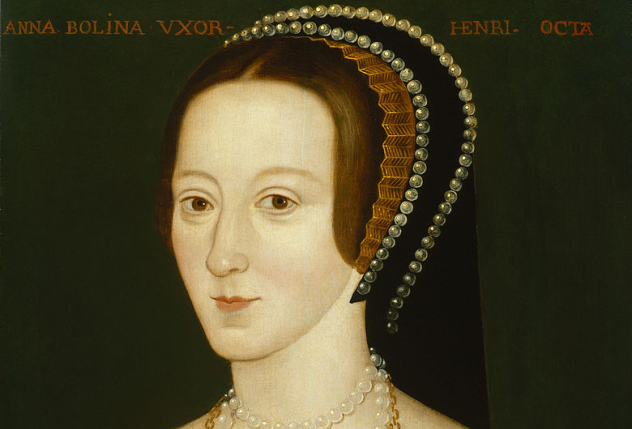
In a desperate bid to find a male heir, Henry VIII divorced Catherine of Aragon and married Anne Boleyn. Their marriage soon ran into trouble because Anne was also unable to provide a son. Another woman by the name of Jane Seymour soon caught the king’s eye, and he began to look for ways to get rid of Anne. He succeeded by having the queen convicted and executed for witchcraft and adultery.
While awaiting her death, Anne made one last frantic effort to save herself by writing a letter to Henry. The letter, which was never delivered to him, was a declaration of her innocence. She claimed that the mere thought of her alleged crimes had never crossed her mind and pleaded to be tried openly with a fair panel of judges, not one filled with her enemies. She hoped that she would be able to convince the judges that she was innocent, thereby clearing any humiliation that the king must have suffered because of the scandal. She concluded by saying that if the slander was what made Henry happy, then she wouldn’t bother herself but rather wait for the judgment of God, who would declare her innocent. She also expressed her wish for Henry and her enemies to be forgiven for their sins.
2 Mary, Queen Of Scots
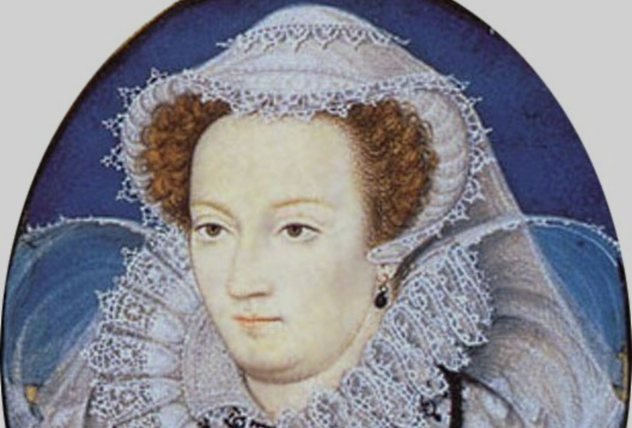
After being imprisoned for almost 19 years, Mary, Queen of Scots, was sentenced to death on the orders of her cousin, Queen Elizabeth I of England. A few hours before she was to be executed on February 8, 1587, Mary wrote a letter to Henry III of France, the brother of her first husband. The letter was written in French and was sent through Mary’s physician, who delivered it months later.
In the letter, Mary broke the news of her death sentence to Henry. She stated that Elizabeth’s subjects had denied her the chance to write her will and the opportunity to dictate how her body was to be buried. Mary claimed that she was being prosecuted for her right to the throne and her Catholic faith. She requested that the king pay her servants the salary she owed them with the debt he owed her and asked him to take care of her son. She sent the king two precious stones and a talisman for good health. She also requested that whatever money remained after her servants had been paid be used to honor her with a memorial mass and funeral rites.
1 Adolf Eichmann
Infamously known as “the Architect of the Holocaust,” Adolf Eichmann played a lead role in the extermination of the Jews during World War II. Following Germany’s loss, Eichmann fled to Argentina, where he was caught by Mossad in 1960. He was tried, found guilty, and was sentenced to death by hanging.
Two days before his death, Eichmann wrote a letter to President Yitzhak Ben-Zvi of Israel. The handwritten letter was a plea to the president to stop his execution. The letter, which was written in German, was sent on the day that the Supreme Court of Israel denied his appeal. In the letter, Eichmann pleaded for pardon because he was just an official following orders. He claimed that none of the crimes ordered against the Jews were in his own name. He supported the trials of the people responsible for the Holocaust but felt that such trials should not be extended to people like him who were just following orders. He begged to be pardoned because the sentence against him was unjust.
